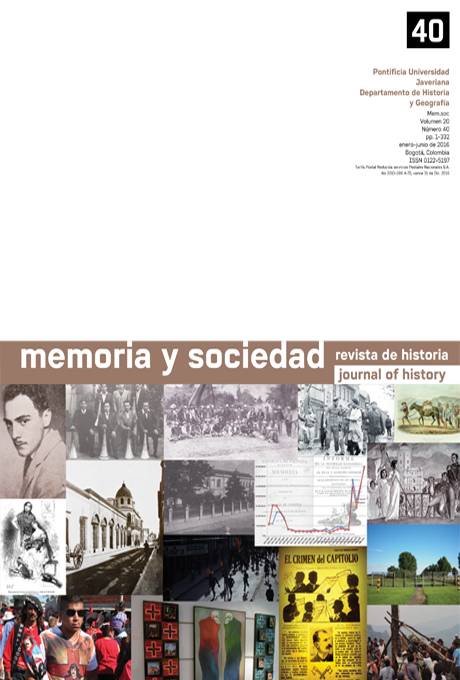Resumen
En el presente trabajo presentaré y analizaré
las representaciones del conflicto armado interno
(1980-2000) que azotó con particular
fuerza y violencia a las comunidades de la
sierra sur-central del Perú. Dicho conflicto se
enmarca dentro de una larga historia de discriminación
y racismo que ha caracterizado la
relación entre Estado y ciudadanos quechuahablantes.
Esta experiencia es fundamental
para comprender la forma y el contenido que
adquieren tanto las memorias del conflicto que
tienen estas comunidades, como los artefactos
que componen la exhibición de los museos de
memoria. Sobre la base de un trabajo de campo
de carácter etnográfico, me centraré en el
análisis y contextualización de los objetos que
se encuentran en exhibición en el museo «Para
que no se repita» de la Agrupación Nacional de
Familiares de Secuestrados, Detenidos y Desaparecidos
del Perú (anfasep) de Ayacucho.
La revista Memoria y Sociedad se encuentra registrada bajo la licencia Creative Commons Reconocimiento 4.0 Internacional. Por lo tanto, esta obra se puede reproducir, distribuir y comunicar públicamente en formato digital, siempre que se reconozca el nombre de los autores y a la Pontificia Universidad Javeriana. Se permite citar, adaptar, transformar, autoarchivar, republicar y crear a partir del material, para cualquier finalidad (incluso comercial), siempre que se reconozca adecuadamente la autoría, se proporcione un enlace a la obra original y se indique si se han realizado cambios. La Pontificia Universidad Javeriana no retiene los derechos sobre las obras publicadas y los contenidos son responsabilidad exclusiva de los autores, quienes conservan sus derechos morales, intelectuales, de privacidad y publicidad.
El aval sobre la intervención de la obra (revisión, corrección de estilo, traducción, diagramación) y su posterior divulgación se otorga mediante una licencia de uso y no a través de una cesión de derechos, lo que representa que la revista y la Pontificia Universidad Javeriana se eximen de cualquier responsabilidad que se pueda derivar de una mala práctica ética por parte de los autores. En consecuencia de la protección brindada por la licencia de uso, la revista no se encuentra en la obligación de publicar retractaciones o modificar la información ya publicada, a no ser que la errata surja del proceso de gestión editorial. La publicación de contenidos en esta revista no representa regalías para los contribuyentes.


